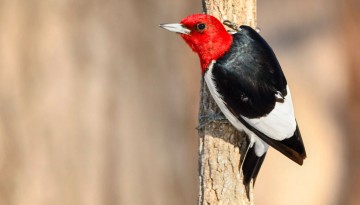Evolution of Wing Skeletons in Small Birds May Be Less Constrained
Load-bearing bones within the wings of smaller birds may evolve more freely than they do in larger birds, since larger birds have to resist higher levels of stress on their skeletons, according to a study published May 28 in Nature Communications.
This finding could explain why small birds have explored a wide variety of styles of flight, ranging from hovering hummingbirds to bounding sparrows to soaring swifts and swallows.
“The evolution of wing proportions is more tightly restricted in large birds, which operate under greater mechanical stresses,” said Andrew Orkney, lead author and a postdoctoral researcher in the lab of co-author Brandon Hedrick, assistant professor in the Department of Biomedical Sciences in the College of Veterinary Medicine.
The study has potential implications for biological understanding of animal evolution beyond birds.
“We found that larger birds have to change different skeletal components of their wings at the same time rather than being able to evolve different parts of their wings independently,” Hedrick said. “It’s easier to change a small part of the wing than all of the wing. It could be that larger animals are less capable of evolving quickly and moving into new niches more generally.”
Birds vary in body mass by a factor of 10,000, so they are an excellent model system to investigate this broader question in animals, the researchers said. Within birds, this may explain the special evolutionary success of small-bodied lineages. For example, of the 11,000 total bird species, around 6,500 are songbirds, which are typically small.
“Hummingbirds are also a very successful and small group, but nothing is as successful as songbirds within birds,” Hedrick said.
The researchers used previously published, open-sourced datasets of precise measurements collected from 228 micro-CT-scanned bird skeletons. Landmarks for reference were marked on each bone. Using this archive, Orkney and Hedrick applied statistical methods to assess the degree to which different bones evolve either together or independently of one another across the avian family tree – known as their evolutionary “integration.”
The researchers also assessed integration in the head and legs, which are not under greater mechanical stress during flight, finding no significant change in integration. The researchers were surprised to discover that bones in the thorax and abdomen of small birds tended to be more tightly integrated.
One possible explanation for unusual thoracic evolution in small birds is that they often flap and then propel with wings folded, a pattern known as “bounding” flight. “I suspect that in order to practice bounding flight, it’s important that all the proportions of the bones within that thoracic and abdominal region match each other well, explaining their tight co-evolution,” Orkney said.
In future work, the researchers will investigate how changes within the thorax and abdomen interact with the wing in small birds; whether integration in birds is structured differently between birds born able to fly as soon as they hatch and birds that are born helpless, and whether bats, which have evolved flight independently from birds, follow similar evolutionary rules or whether there are multiple ways to structure a flying vertebrate.

